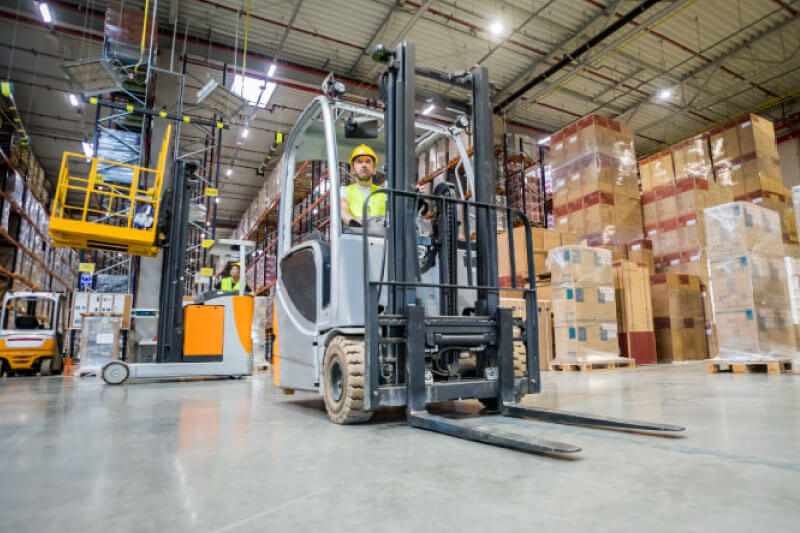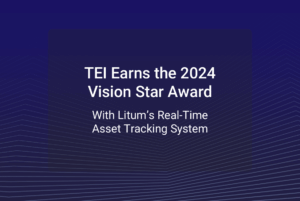Contents
Forklift accidents are a leading cause of occupational injuries and deaths in the United States. According to the Occupational Safety and Health Administration (OSHA), forklift trucks are involved in an estimated 85 fatal accidents and 34,900 non-fatal injuries each year.
The vast majority of these accidents could be help to prevent with proper training and safety measures. This is where a Forklift safety system comes in.
What is a Forklift Safety System?
Forklift safety systems are designed to help prevent accidents by ensuring that the vehicles are operated safely. These systems typically include sensors that detect when a forklift is approaching an obstacle, and they may also include cameras that provide the operator with a view of the area around the forklift.
Automated Ways to Improve Forklift Safety
6 Common Forklift Safety System Problems
Forklift safety is critical for any business that uses forklifts in its operations. Unfortunately, forklift accidents are all too common, and they can often be traced back to forklift safety system problems.
Some of the most common problems that employees and pedestrians on the operation floor face regarding forklift safety issues are as follows.
Negligent operator behavior
One of the most common forklift safety system problems is operator awareness. Many forklift operators are simply not aware of the potential dangers that they face when operating a forklift. This can lead to careless or reckless behavior that can result in an accident.
In addition, there may be several safety measures already installed in most forklift trucks, but the operators take them for granted and end up causing accidents resulting in substantial manufacturing losses.
Regulation compliance
Another common forklift safety system problem is OSHA compliance. Many businesses that use forklifts are not in compliance with OSHA regulations. This means that they are not following the proper safety procedures and protocols for operating forklifts. This can often lead to accidents.
Forklift maintenance

Locating unmanned forklifts
Another common issue is unknown vehicle location. When it comes to workplaces and warehouses that span thousands of yards, locating a specialized forklift becomes a chore, resulting in not just time lost but also customer disappointment and order cancellations.
Even if the forklift safety system is installed in a forklift, tracking it when it is switched off and the radios are also down isn’t easy. Shipments get delayed and paying clients begin losing trust in your services.
Blind spot hazards
For forklifts, a blind spot is usually the area directly behind the machine. This can pose a serious safety hazard, as unexpected injuries can occur if people or objects are in the path of the forklift.
Several factors contribute to blind spot hazards. One is that forklifts are often carrying full loads, which can obstruct the view of the driver. Another is that forklifts often operate in poorly lit areas, making it even more difficult to see behind them. Finally, forklifts make frequent stops and starts, which can also contribute to blind spot accidents.
Load Hazards
One of the most common forklift safety problems is insecure or unstable loads. This can happen when the load is not properly secured to the forks, or when it is overloaded and exceeds the capacity of the forklift.
In either case, an insecure load can fall off the forks and cause serious injury to nearby workers. Similarly, forklifts should never be used to transport hazardous materials. These materials may leak, spill, or catch fire, posing a serious safety risk to nearby workers.
If you are using a forklift to transport hazardous material, be sure to follow all safety guidelines and procedures to minimize the risk of an accident.
How can Litum RTLS Forklift Solution help?
RTLS forklift solutions utilize state-of-the-art RFID tags and related technology to track the movement of forklifts in real-time. This information is then transmitted to a central computer system, which allows managers to monitor and manage the activity of forklifts in their facility.
Ensuring the overall well-being of employees and pedestrians is made effortless with the application of the right RTLS solution for an organization.
How Litum Forklift Safety System Work?
Forklift Collision Warning Systems and RTLS
As anyone who has ever driven a car knows, collisions are a very real risk. The same is true for forklifts in warehouse and manufacturing environments. That’s why many RTLS (real-time location system) solutions now offer collision avoidance features.
Forklift safety sensors are used to detect when a forklift is getting too close to another object. When a collision risk is detected, the system will generate an audio or visual warning to the operator. This gives them time to stop or take evasive action, potentially avoiding a costly accident.
In some cases, the system may even automatically apply the brakes if it detects that a collision is imminent. By using proximity detection, collision avoidance systems can help to make warehouses and factories safer places to work.
Pedestrian Accident Safety System
Pedestrian safety is always a top priority in the workplace, and that’s why many businesses are now turning to pedestrian accident help to prevention systems. The system uses radio frequency identification (RFID) tags to track the location of both forklifts and pedestrians in real-time.
If a pedestrian comes within range of a forklift, the system will send an alert to the operator, giving them time to avoid a collision. Also, if a pedestrian is walking behind a forklift that is about to turn, the system will send an alert to the forklift operator to stop and yield the right of way.
Pedestrian accident help to prevention systems can also be used to monitor traffic flow and pedestrian congestion levels in order to help to prevent collisions. By leveraging the power of real-time location data, businesses can create a safer working environment for everyone involved.
Zone-based Forklift Safety System
A zone-based forklift speed control system works through configurable range zones that can be set up in intersections or other areas with high pedestrian density. The system uses sensors to detect the presence of forklifts and automatically adjust their speed based on the density of traffic in the area.
This helps to improve safety by reducing the risk of collision, and it also helps to improve efficiency by eliminating the need for drivers to manually adjust their speed.
The zone-based safety system is an important part of RTLS forklift solutions, and it can be customized to meet the specific needs of any warehouse or distribution center. RTLS can be used to create virtual barriers. If a forklift is approaching an area that it should not be in, the operator will receive a warning, and the forklift will automatically stop before it reaches the barrier.
In addition, RTLS solutions can provide valuable data that can be used to improve safety procedures. By understanding how and why accidents happen, companies can take steps to help prevent them from happening in the future.
As a result, RTLS forklift safety solutions can play a vital role in reducing forklift safety problems in the workplace.
Litum: The leading provider of RTLS Forklift Solution
Having real-time tracking system information available in real-time, managers can more quickly and effectively respond to safety problems as they occur. In addition, RTLS solutions can provide valuable data that can be used to improve forklift safety procedures in the future.
For example, by analyzing data from past accidents, managers can identify areas for improvement and make changes that could help prevent future accidents.
In short, RTLS forklift solutions offer a number of benefits that can help reduce forklift safety problems in the workplace. As the adoption of this technology continues to grow, we will likely see an even greater reduction in forklift-related accidents and injuries.
RTLS tracking is more than just a solution to sustain your business growth. With the right system in place, you can transform your day-to-day functioning and approach to forklift safety while ensuring streamlined workflows and boosting employee safety on-site.
The real-world application of Litum RTLS Solutions offer numerous benefits to your organizational productivity.
Automated workflows, optimized inventory, efficient asset utilization, automated social distancing, better emergency management, location tracking analytics, and of course, forklift safety systems installation are just a few real-time safety solutions that Litum assures.
For further inquiries or a live demonstration of our RTLS solutions, reach out to us via our website or stay updated on all things RTLS with our informative blog resource.




